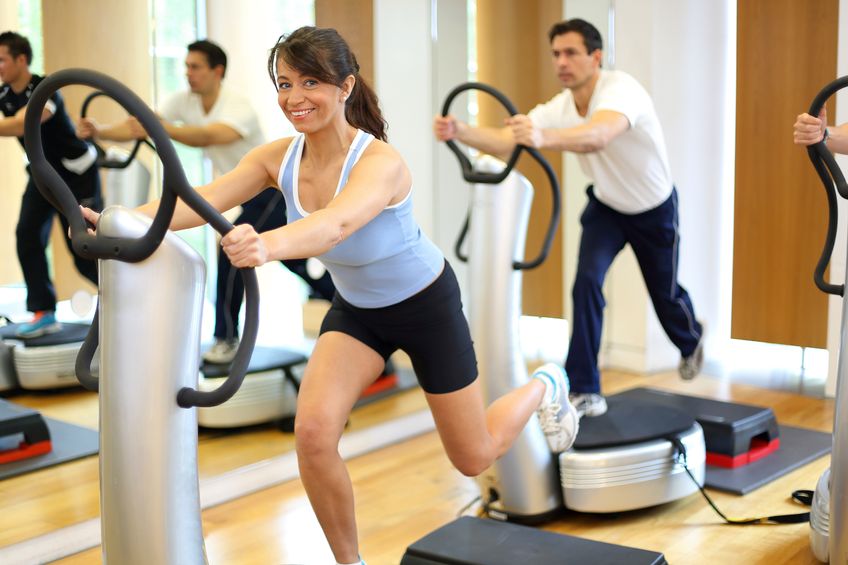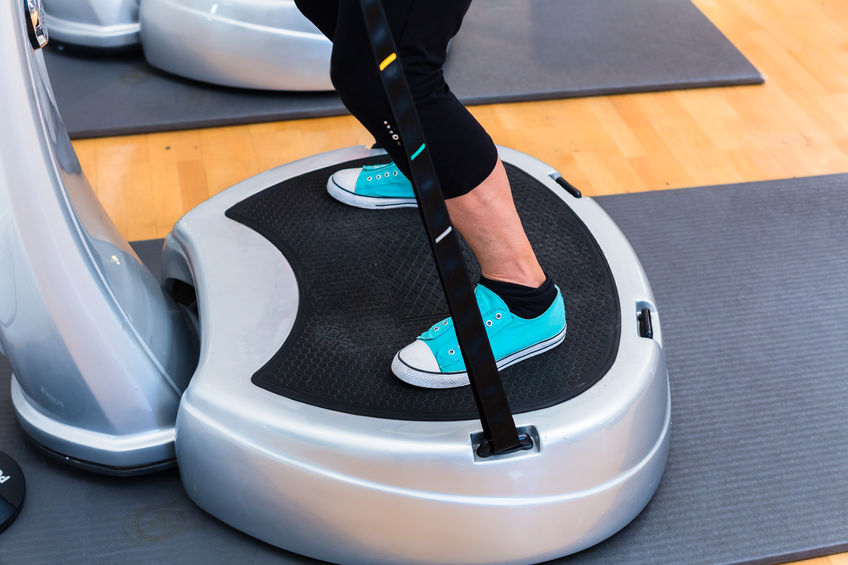Your bones are living tissue that require movement and exercise to remain healthy.
But besides from traditional exercise, what else is out there? Many believe that there are machines which we can use to make our bones stronger. But where did this idea come from?
The Daily Stress Stimulus Theory
This theory proposes that daily stress stimulus on your bones can help to achieve stronger bones. It proposes that a high cycle number and low magnitude stimulation may be sufficient for maintaining bone mass. And strain frequency may be an additional factor critical to the process of bone adaptation.
The Daily Stress Stimulus Theory, and similar ways of thinking, have lead to the popularisation of whole body vibration (WBV) machines. These devices work like this: you stand on something that looks like a weight scale. The machine delivers vibrations in a combination of intensity and speed. These vibrations make your muscles work, and improves your bone strength.
But studies looking at the effects of WBV on bone health among older adults and postmenopausal women form an inconclusive opinion.
Let’s look at both sides…

The Research: Whole Body Vibration Machines
Studies reported findings suggesting that WBV may represent an effective non-pharmacological intervention for preventing a decline in bone mass density (BMD) or for increasing or maintaining BMD in populations with below-normal BMD or osteoporosis.
One study published in the Journal of Bone Mineral Research looked to assess the musculoskeletal effects of high-frequency loading (vibrations) by means of WBV in postmenopausal women.
The results showed no vibration-related side effects. But more interestingly, they found that the vibrations improved isometric and dynamic muscle strength, and also significantly increased BMD of the hip.
Their findings suggest that WBV training may be a feasible and effective way to modify risk factors for falls and fractures in older women.
Another study published in BMC Musculoskeletal Disorders aimed to compare the effects of WBV on bone mineral density and balance in postmenopausal women.
The results of the study showed that after 8 months, BMD at the femoral neck in the WBV group increased by 4.3% compared to a group that exercised by walking alone. Balance was improved in the WBV group by 29% compared to the walking group.
These results suggest that the 8-month course of vibratory exercise was feasible and more effective than only walking to improve two major determinants of bone fractures: hip BMD and balance.
Further, the Database of Abstracts of Reviews of Effects (DARE) reviewed the available research on the effectiveness of WBV on muscle performance, functional mobility, balance and bone density. The results showed that WBV machines improved bone density in the tibia and hip, but not in the lumbar spine.
But other studies disagreed…
One study published in Aging Clinical Experimental Research looked at the effect of WBV exercise on lumbar bone mineral density, bone turnover, and chronic back pain in postmenopausal osteoporotic women. It found that there were no significant differences in lumbar BMD after use of WBV.
While subjects did report that WBV exercise did reduce back pain, they found that any increases in lumbar BMD were similar to those in the control groups.
A second study looked at whether low-magnitude, high-frequency mechanical stimuli from WBV helped prevent postmenopausal bone loss.
They reported the WBV machine failed to support any changes in bone density.
Additionally, a study published in Maturitas examined vibration exposure on muscle or bone morphology (the study of form) and function in older adults.
Using a literature search of published randomised control trials (RCTs) they found 6 trials that met the inclusion criteria. All statistically significant improvements were shown for muscle function, not bone mineral density.
The mixed results may be due to irregularities and inconsistencies in study design. While further research is needed, the focus on uniformity will be crucial for future trials. In other words, investigating optimal dose-response relationships and variations in vibration characteristics, which will help determine true efficacy.
In addition, while the focus is on WBV machines (and rightly so) the trials didn’t seem to incorporate important bone-building aspects such as diet and nutrition. Exercise is just one part of a successful bone health program. You also need the vitamins and minerals that your bones crave!
But before we get into that…what are the potential safety concerns to consider when using a WBV machine?
Given that older adults and individuals with physical impairments are at a higher risk of experiencing adverse effects from WBV stimuli, it’s important to speak to your doctor if you’re thinking about trying WBV machines.
WBV machine manufacturers are subject to FDA guidelines stating that individuals who have one of the following conditions should not partake in WBV training:
- kidney or bladder stones
- arrhythmia
- pregnancy
- epilepsy or seizures
- cancer
- a pacemaker
- untreated orthostatic hypotension
- recent implants (joint/corneal/cochlear, etc.)
- recent surgery
- recently placed intrauterine devices or pins
- acute thrombosis or a hernia
- acute rheumatoid arthritis
- serious cardiovascular disease
- severe diabetes
- migraines

“I have low bone density. Will vibration therapy help my bones?”
There is evidence for both sides of the argument. So if you’re keen to try a vibration machine, you need consider the pros and cons:
WBV therapy may be beneficial as part of a falls prevention program, and studies we discussed above did find that WBV provided some benefit for bone density.
However, vibrations may be detrimental to the spinal bones if they are very fragile. If you have very severe bone loss, you’d need to be careful when using the machine, and also when getting on and off. And based on the varied results reported in the literature, we’re reluctant to conclude that WBV would be beneficial for everyone.
That’s why it’s really important to discuss consult your doctor or physiotherapist prior to using a vibration machine.
Increasing Bone Density – What Works?
Researchers have different opinions and there isn’t a clear answer about the effectiveness of WBV, yet. However, we’re excited to see what new research uncovers.
But for now, let’s stick to what we know.
That includes incorporating weight-bearing exercise suitable for your fitness level. It can be as simple as a nice walk, yoga or tennis. It also means eating a diet that is highly nutritious, taking care of your gut health to aid proper absorption, and continuing with your AlgaeCal Plus and Strontium Boost to ensure your bones get the essential minerals they need.
Your bones need exercise, but they also need the nutrients they crave.
[ac_banner name=”bbpboat”]
Let us know if you’ve used vibration machines before in the comments below. It’s a polarizing topic, but we’d love to hear your thoughts.





Monique van Etten
August 20, 2016 , 10:15 amHello Dean,
I have a juvent machine, which must improve bone density.
I have none off the conditons mentioned above.
Is a juvent different than the machines mentioned above and
Is t helpfull or not to stand on it?